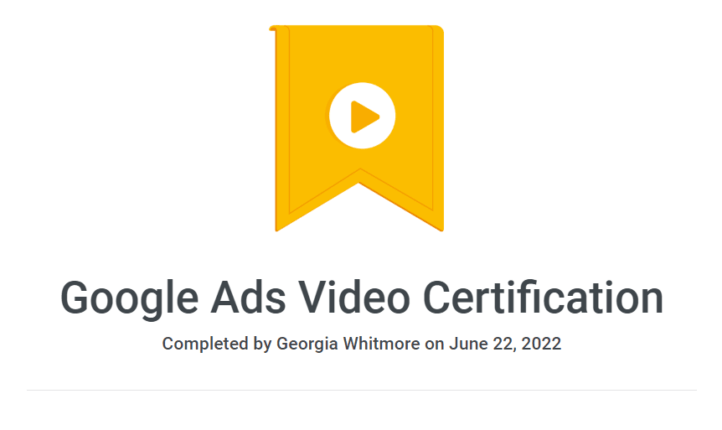
Everyday’s a School Day – Georgia
It’s that time of year again…..it only feels like a few weeks ago since I last took my annual Google exams, yet here we are again.
To secure our prestigious status of being a Google Partner, my colleagues and I in the advertising team have to successfully pass a number of specialist exams. In the past, I have always studied for and renewed the same exams, Search and Display, as the bulk of my clients use these Google products alongside their paid social campaigns – but to add to my stress levels, June asked me to complete the YouTube exam this time as I am managing a number of video campaigns too.
No problem I thought….I’m totally down with the kids when it comes to my YouTube knowledge….how wrong could I be??
I learnt so much new information – too much to put into a short blog post – but let me start by telling you some of the basics.
YouTube was launched 17 years ago and since then the platform has developed massively. It is now better, faster and stronger than ever. Here are some (big) numbers..
- YouTube has 1.7 billion unique monthly visitors.
- YouTube has 14.3 billion visits per month – more than Facebook, Wikipedia, Amazon and Instagram.
- Visitors spend an average of 19 minutes a day on YouTube.
- YouTube is the world’s second-most visited website – after Google of course!
- 694,000 hours of video are streamed on YouTube each minute.
- YouTube ads have the potential to reach 2.56 billion users – that’s 32% of the total population, and 51% of the total internet users out there.
It’s no wonder then that more and more people are turning to YouTube to advertise their services or products. So what makes YouTube so great for advertisers?
A few years ago, some changes were made that allowed advertisers to reach more viewers on YouTube — especially across mobile devices, (where 50% of YouTube views take place). The biggest change that was made was that advertisers would be able to target viewers based on their Google search history, in addition to their viewing behaviours. If the video subject within the ad is closely related to a search the viewer has been researching, they would probably be more likely to watch the full ad or click through to the website.
With a wide range of targeting options available it is possible to reach specific or niche audiences based on who they are, what they’re interested in, and what content they’re viewing. E.g., it is possible to target based on the following methods: demographic groups – age, gender, parental status, or household income.
Detailed demographics – college students, new parents, homeowners
Interests – chose from available audience categories to reach people interested in certain
topics
Placements – your ads will be seen on specified websites, apps, YouTube channels etc
Keywords – show your video ads based on words or phrases related to a YouTube video
Devices – target users using computers, smart phones, mobile devices, and TV
There are also various types of video ads, depending on how you want to engage with your audience and what goals you want to achieve. These being:
- Skippable in-stream ads
- Non-skippable in-stream ads
- In-feed video ads
- Bumper ads
- Outstream ads
- Masthead ads
Video content is becoming more and more popular, more so now that YouTube lets you target users based on their search histories, and is more targeted than ever, making it very powerful advertising tool.
This is just the tip of the iceberg of all the information I took on board this week while studying for my exam – the opportunities for my clients are all quite mind blowing. Looking forward to what new challenges June will throw my way next year…
Contact us to find out how YouTube can help your business succeed.